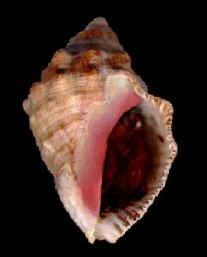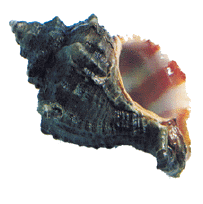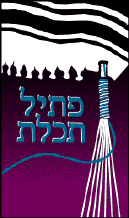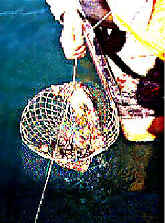| |
|

"And the Rabbis said: Why does the Torah enjoin us regarding
tekhelet?
Because tekhelet resembles sapphire, and the Tablets were of sapphire, to
tell you that so long as the people of Yisrael gaze upon this tekhelet they are
reminded of that which is inscribed on the Tablets and they fulfill it, and so it
is written, 'And you shall see it and remember.'
(Mishnat Rabbi Eliezer, ch. 14).
In ancient times purple and blue dyes derived from snails were so rare and
sought after that they were literally worth their weight in gold. These precious
dyes colored the robes of the kings and princes of Media, Babylon, Egypt,
Greece and Rome. To wear them was to be identified with royalty.
Twice daily we read:
"Hashem spoke to Moshe saying: Speak to the Children of Israel and say to
them that they shall make themselves tsitsit on the corners of their garments
throughout their generations. And they shall place upon the tsitsit of each
corner a thread of tekhelet... And you shall see it and remember all of the
commandments of Hashem and you shall do them,"
(Bemidbar 15:37-39)
We are commanded to place a thread of blue on our tsitsit as a constant and
conspicuous reminder of our stature. We are banim lamakom, noble sons of
the King of the Universe, always pursuing His mitzvot.
Murex Trunculus
Photo- Phyllonotus (Murex) trunculus from the
Carthage excavations. The hole in the shell
was done to extract the hypobranchial tinctorial
gland.



Inside the hypobranchial gland of the
snail, the precursors to the dye exist as a
clear liquid. When these are exposed to
air and sunlight in the presence of the
enzyme purpurase, which also exists
within the gland, they turn into the dye.
Purpurase quickly decomposes, so for
this reaction to take place, the gland
must be crushed soon after being taken
from the live snail, in accordance with the
Talmudic passage that the tekhelet is
taken from the Chilazon while still alive.
The liquid from the trunculus, produces a
mixture of dibromoindigo (purple) and
indigo. These molecules must be put into
solution for them to bind tightly to wool. In
this state, if dibromoindigo is exposed to
ultraviolet light, it will transform to indigo,
turning the trunculus mixture from
A fisherman in the 19th century wants to impress his
shipmates. He reaches into the water, pulls out a snail,
breaks it open and smears his shirt with the contents.
To everyone's amazement, the yellowish streak
dramatically changes color in the bright Mediterranean
sun. The secret of tekhelet is revealed.

One should always be heedful of the commandment to wear tsitsit, for the
Torah equated and connected all other mitzvot with it, as it is written 'And you
shall see it and remember all of the commandments of Hashem and you
shall do them.'
(Rambam, Hil. Tsitsit, 3;13)
The story of the search for the source for the dye tekhelet - Biblical blue - is
one of intrigue, deception, and deduction. It weaves together clues from Torah
scholarship, archeology, and chemistry, and its major players include a great
Chasidic Rebbe, a former Chief Rabbi of Israel, archeologists, marine
biologists and chemists.
Biblical Blue

That fishing method is, to day, in Tunisia exactly the same
as the description
done by Pline 2000 years ago.

These hills on the south west coast of the island of Jerba
are made by thousands of murex shells. They are testimonies of an huge purple dying
activity from more than 2 millenaries.
Murex trunculus was the most searched of all the
molluscs during more than 2 500 years for the industry
of dyeing royal purple.
The shell, here, is one of the billions discovered at
Carthage, city who remained one of the greatest centre of
the dyeing manufactory from the Phoenician (11 centuries
BP- in the Tunisian southern island of Jerba) to the Byzantine times (5 century AD-
Carthage) and later (from 7 to 11 century), in
the Arabic times with manufactures even in the central Tunisia, at Kairouan.
The presence in Jerba (south Tunisia) of one of the most ancient jewish community and of
one of the most ancient synagogue
abroad and the huge accumulations of Murex trunculus (to see them click here), used for
local industry 3000 years
ago, may be to put in relation with the interest of the Jews for the dye called
"tekhelet" in the Talmudic tradition.
The presence at Kairouan is attested by a "purple Koran" from this city, to day
stored in the "Bibliothèque Nationale " in Paris.
The commercial importance of the royal purple was attested by its price who vied in value
even with the gold
itself.
|

